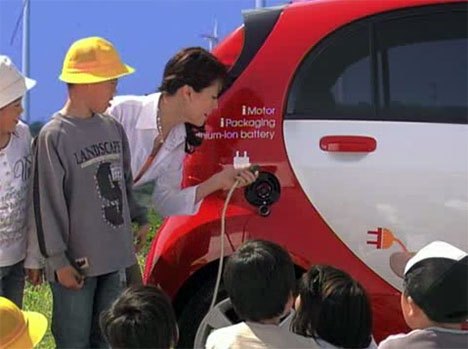#WSJ
In Electric Leasey-Land, Up Is Down And Suburbans Are Cheaper Than Tahoes
Okay, I admit: I subscribe to the Wall Street Journal. It’s not really for me; Mrs. Baruth works in finance. (Without which, as you pimps and players out there should know, there’s no romance.) Rarely do I read the whole thing. This past Saturday afternoon, however, I broke the pull-cord of my son’s TopKart. Then he ran out of gas for his motorcycle. Which consigned us both to an early afternoon inside the house, because I was too lazy to address either situation.
Imagine my surprise to find an advertisement for an independent leasing agent in the last of the Saturday sections, back among the lifestyle articles and the usual Dan Neil attempt to sound like a more fey version of Oscar Wilde. Those members of the B&B who were born prior to the release of “Appetite For Destruction” will remember that stand-alone leasing shops were once very big business. They bought their cars from franchised dealers, often well after they’d obtained the customer’s signature on their own paperwork, and they relentlessly cross-shopped banks for rate and residual deals.
Often, these firms focused exclusively on members of the professional class; the big hitter in central Ohio during the ’80s was un-self-consciously titled “Physicians Leasing Co.” They were largely driven from the field by the beginning of this century by aggressive captive finance providers like BMW Financial. The tendency on the part of most banks to view the end-of-lease termination process as an additional and very lucrative profit center, a tendency that became more exaggerated as the prime rate fell and banking profits sank accordingly, didn’t help their business model one bit.
Nevertheless, here we are, in $THE_CURRENT_YEAR, with a manufacturer-agnostic leasing company advertising in the WSJ. So let’s see what the deals are, and what lessons we can learn from looking at them.
WSJ: Volvo "Might As Well Back Out Of" The United States
Volvo’s target is the lower end of the Lexus, BMW, Audi and Mercedes lines… Most experts consider the cars made by these companies engineering marvels. And Volvo, a Swedish marque with Chinese ownership, is another manufacturer that does not have the model line, marketing budget or dealer network to hope to compete.
Doesn’t sound like a vote of confidence, does it?
Wall Street Journal Misses Its Mark With The Dart
It’s the kind of mistake that only a blogger (said with a contemptuous sneer) would make. The Wall Street Journal reports that
“U.S. regulators rated a new Chrysler Group LLC compact car with highway fuel-economy of 41 miles a gallon, a move that fulfills a key element of the company’s 2009 federal bailout and cleared the way earlier this year for majority owner Fiat SpA to increase its stake in the Detroit auto maker.”
They got it wrong.
Beltway Horror: The WSJ In The Grips Of Range Anxiety
This could be the week that separates the electric hype from the electric truth. Real EVs get in the hands of real drivers for real reviews. Our Dan Wallach drove the Tesla Roadster. Our very own Ed Niedermeyer wrote his “GM’s electric lemon” review of the Chevy Volt for the New York Times. (He didn’t really drive the thing, but the article really drove some to drink, up the wall, nuts – their choice, it’s a free country.) And Joseph B. White of the Wall Street Journal laid his hands on a real Mitsubishi i-MiEV, for a real life test drive under the grueling conditions found within the Washington Beltway.
Confirmed: WSJ Writes Nonsense About Toyota EDR Amnesia. Jalopnik In Same League As WSJ
Welcome to amateur hour. As reported yesterday, The Wall Street Journal claimed in a story that Toyota’s “data recorders can lose their information if disconnected from the car’s battery or if the battery dies—as could happen after a crash.” Their source was “a person familiar with the situation.” Commentator Carquestions concluded that the source doesn’t know what he or she is talking about. After we wrote about it, Carquestions fingered the not so knowledgeable source as “a secretary within Media Relations at the DOT.”
Instead of talking to a secretary, the WSJ could have done what we did: Call Toyota headquarters in Tokyo.




















Recent Comments